I am having a singleton class in my code.
In my main function, I created an object of that class.
Then, I tried to create the clone for that object.
And, it gave me "StackOverflowException".
My code looks like:
namespace SingletonApplication
{
class A : ICloneable
{
private static readonly A A1 = new A();
public A A2 { get { return A1; } }
public object Clone()
{
var obj = ((ICloneable)A1).Clone();
return obj;
}
}
class Program
{
static void Main(string[] args)
{
A obj1 = new A();
A obj2 = (A)(obj1.Clone());
Console.WriteLine(object.ReferenceEquals(obj1.A2, obj2.A2));
Console.ReadKey();
}
}
}
